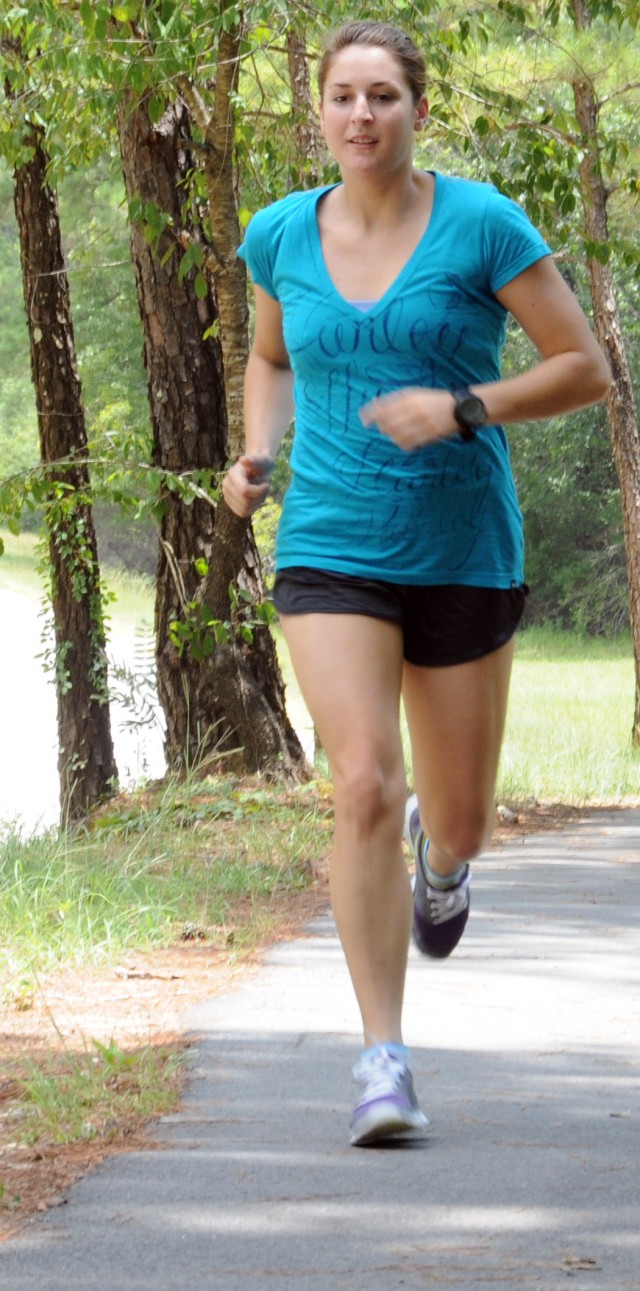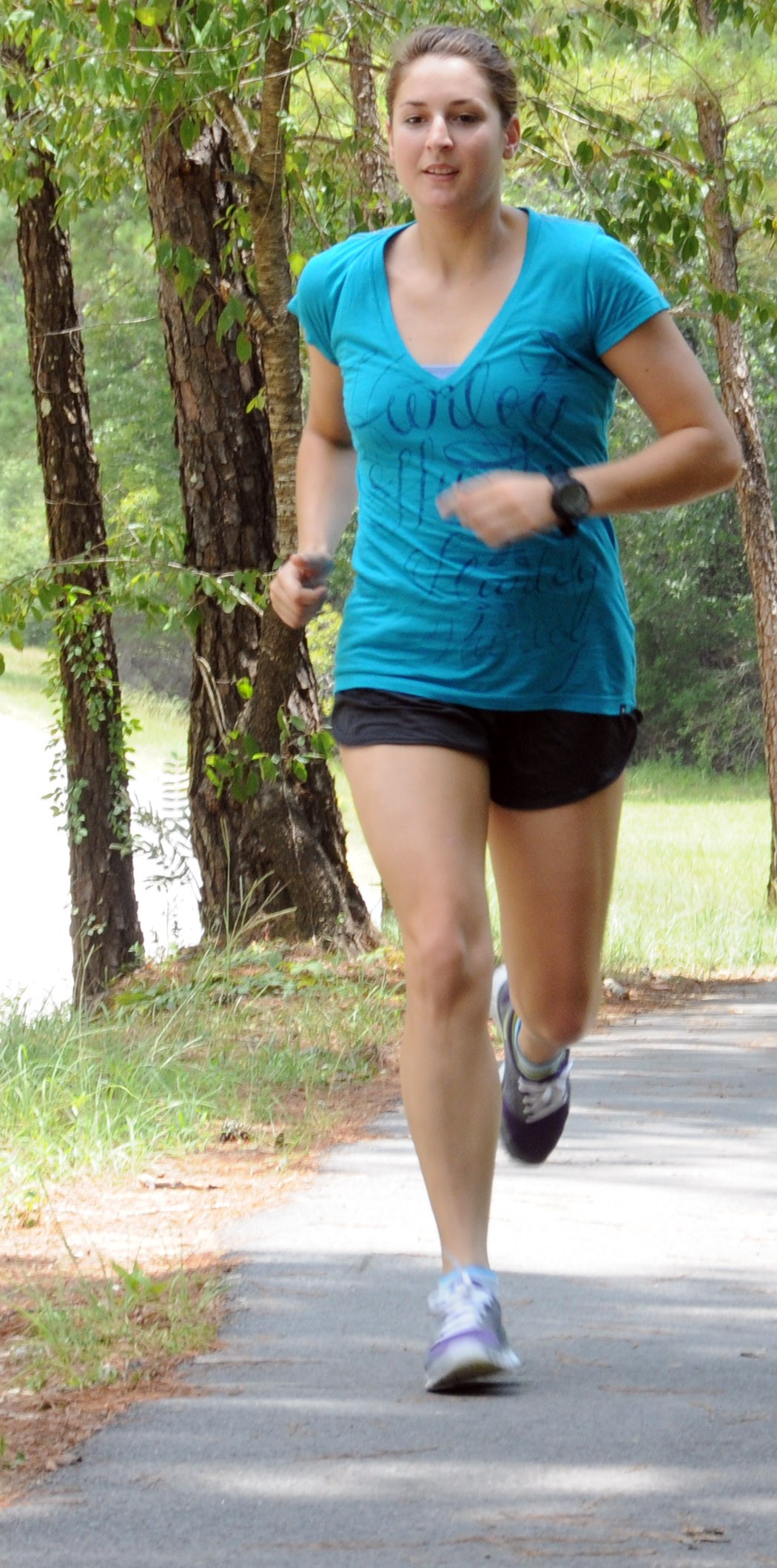FORT RUCKER, Ala. -- For both beginner and experienced athletes alike, races offer unique challenges and goals.
The annual Hispanic Heritage Month Gate-to-Gate race, scheduled Oct. 2, incorporates one additional daunting aspect: hills.
Participants in past races claim steep inclines to be the Gate-to-Gate's most challenging part, said Caroline Driscoll, post fitness program coordinator.
Those inexperienced on inclines should take the next two months to train to overcome the steep course, she and some local runners said.
The 4.2-mile race runs between the Ozark and Daleville gates, and includes an approximately 950-meter hill near the beginning of the course, said Steve Abernathy, the Fort Rucker Army 10-Miler team coach.
The chief warrant officer two is training Soldiers to run the Armywide race in Washington, D.C., this fall, and offers tips for novice runners wanting to start their racing dreams on the right foot.
"Running for a race (means you need to build a plan). It gives you confidence. It's a total body workout. It's good for cardiovascular fitness, lungs and muscles. It's also great for stress relief," he said. "Everyone's a runner, but not everyone's an Olympic runner."
Warm ups and cool downs are critical to preventing injuries, Abernathy said. People should jog for at least five minutes before and after any strenuous running. Minimal stretching is required before a run, but people should spend ample time after a workout stretching and relaxing their muscles.
He suggested beginners train four or five times a week, including one day where they truly push themselves to their limits. The remaining workouts should be moderate to easy aerobic runs. Taking a few days off each week is also important to allow for recovery.
Beginners should find 100- to 300-meter inclines to sprint up and jog down, repeating the routine about five times. As runners improve, they should work up to 10 sets, Abernathy said.
His favorite training route is Christian Road, headed toward the Faulkner Gate, which incorporates many large hills. The gate is closed on weekends, meaning the road is essentially traffic free for two days.
Flight school student Maia Paris, a Fort Rucker Army 10-Miler team member, offered another training routine, using time not distance.
She said beginners should choose hilly trails or roads and run up the inclines for 20 to 30 seconds, then coast back down the hill quickly. They should repeat this exercise as many times as they can, building incline times by five to 10 seconds weekly.
"You'll get a better workout in less time," the second lieutenant said. "Start small. Don't think you have to run five miles a day."
Performing lunges and running stairs are also good alternatives to hills, Paris noted. These exercises can build stronger muscle fibers in a matter of weeks.
For those wishing to escape the summer heat and humidity, Paris suggested running indoors on treadmills and simulating hills. She increases the equipment's incline by 2 percent every two minutes until she reaches her desired grade.
She suggested people aiming to lose weight sign up for races, since pre-event training can provide distractions and keeps individuals from focusing too much on shedding pounds.
Paris' other pre-race success tip is to find accountability and running partners to ensure practice sessions stay on track.
Proper diet is imperative to make any training regimen a success, Abernathy noted. He cautioned those attempting to lose weight from dieting to the extreme when starting a running routine.
"You have to eat. Your body is going through changes when you begin running," he said.
Abernathy advised people to eat four to six meals a day, incorporating ample healthy, whole grain carbohydrates and limiting fat intake.
It is also important to eat snacks directly after runs to provide instant energy so individuals' bodies don't burn muscle tissue and lose muscle mass, he said. Energy shakes, fruit or whole wheat bread are his favorite treats.
Runners need to remain adequately hydrated, especially in hot weather, Abernathy said. People should replenish themselves with water and electrolyte drinks throughout each day.
Runners should also equip themselves with the proper gear to stay focused and injury-free, he said. People should purchase properly fitting sneakers and clothing, seeking comfort over appearance.
Sign up for the Gate-to-Gate race is ongoing by visiting either post physical fitness facility. Registration costs $15 until Sept. 26 and $20 thereafter, Driscoll said.
Bicyclers begin the course at 8:55 a.m. and runners start at 9 a.m. For more information, call her at 255-3794.


Social Sharing